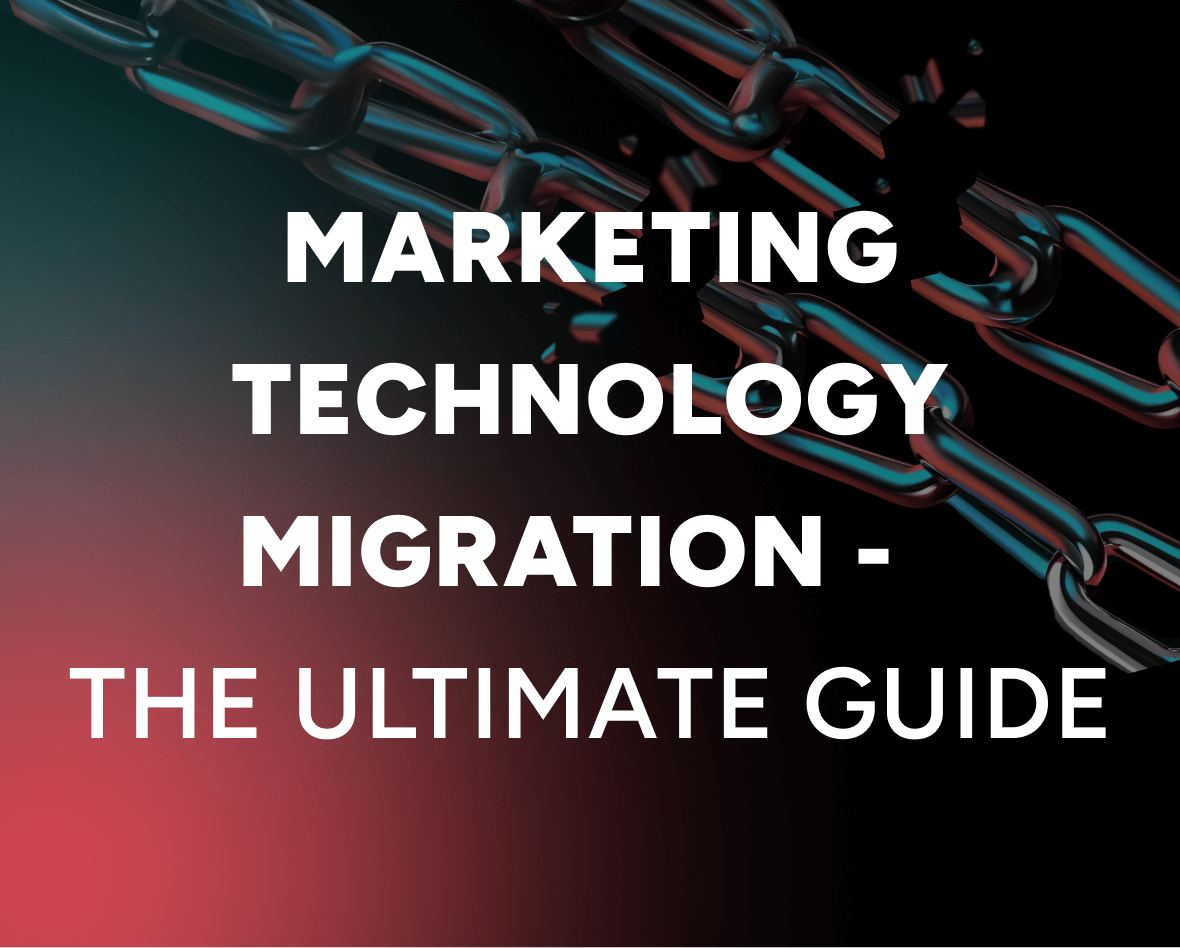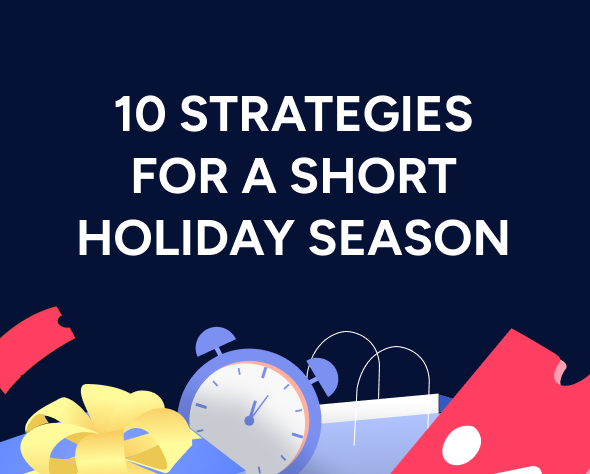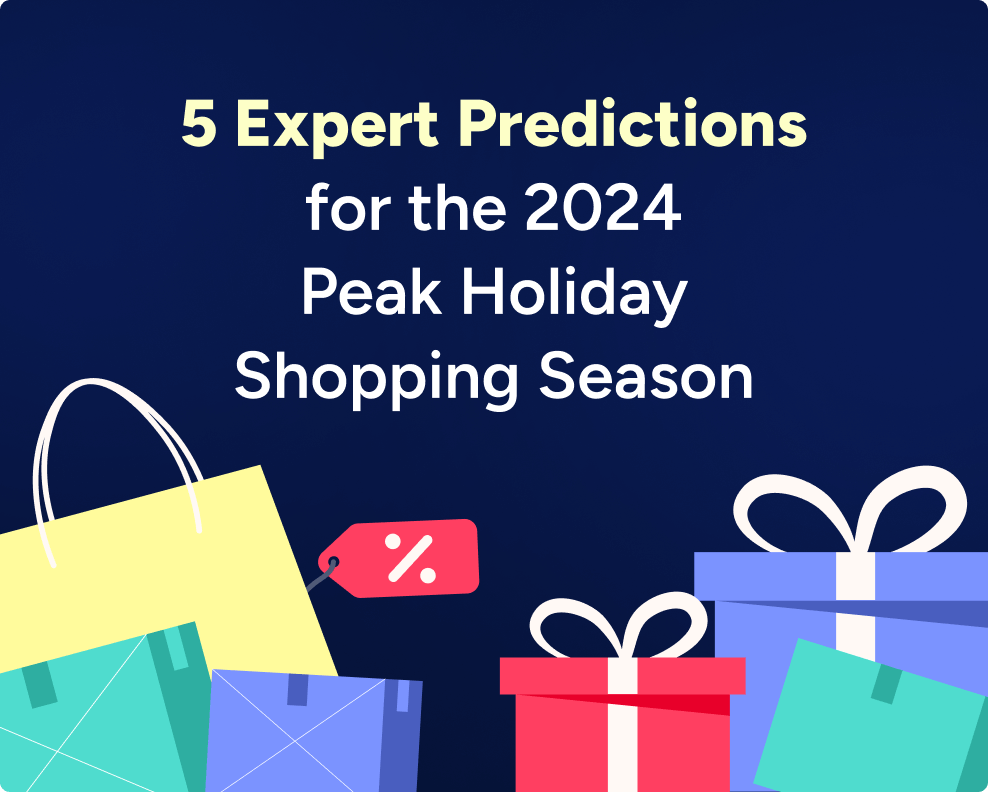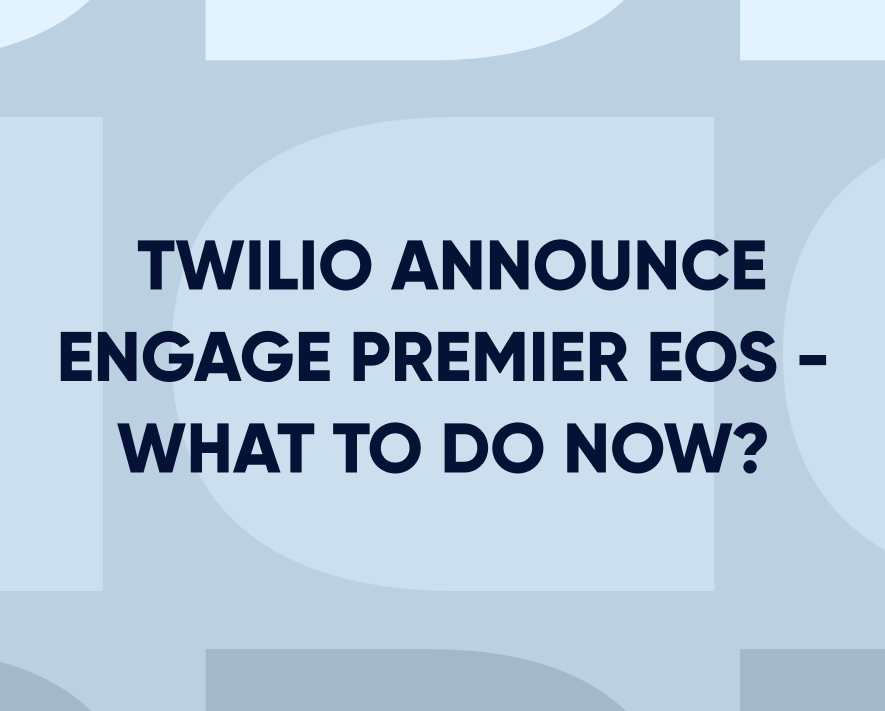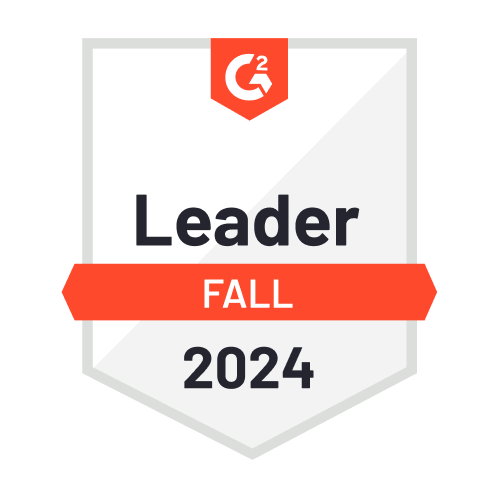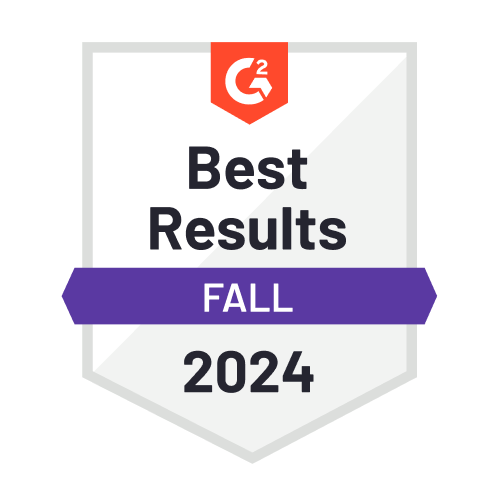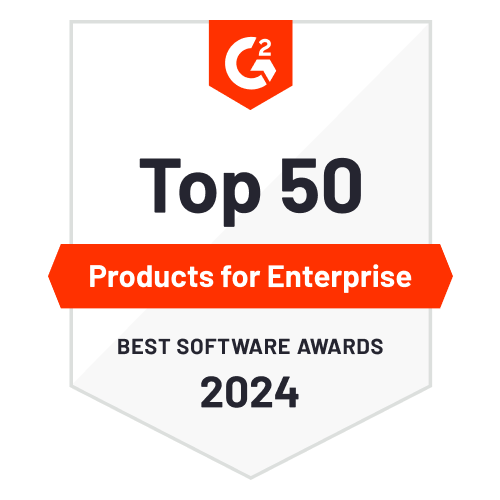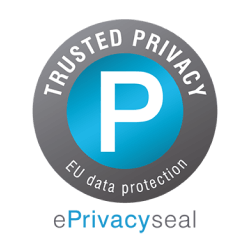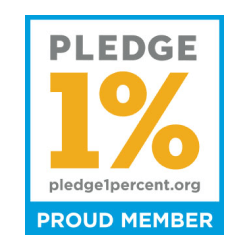Best eCommerce Personalization Software: Top 7 Tools in 2024
Updated on 14 Aug 2024
The right eCommerce personalization software can help you boost conversions, increase retention, and reduce acquisition costs by:
- Collecting data about your users’ behaviors and interests.
- Allowing you to create detailed segments based on that data.
- Letting you personalize messaging, content, and product recommendations across all touchpoints customers have with your brand.
However, there are many eCommerce personalization tools out there, and differentiating between them can be hard. There are three key questions to consider when choosing the right one for your business:
- Which channels does the tool support? True personalization is about tailoring the customer experience across all touchpoints. That’s why it’s essential to get a solution that supports many personalization channels, like on-site, email, SMS, WhatsApp, and so on.
- What type of data do you need before you start personalizing? Some solutions rely on personal data (like demographics, emails, or phone numbers), which makes it impossible to truly personalize the experience of anonymous visitors. Conversely, other platforms let you personalize without collecting any personal data. This approach helps you convert new visitors much faster.
- How quickly can you set up the tool and get value from it? The faster you can set up your personalization tool, the faster you’ll see a return on your investment. That’s why some vendors offer onboarding assistance and pre-made templates that help you get up and running as fast as possible.
In this post, we compare the top seven eCommerce personalization software tools and platforms for enterprise companies, along with options for small and mid-sized businesses.
We’ll start with Insider — our platform for personalized, cross-channel customer experiences — and show how it can help you improve your conversions, lower customer acquisition costs (CAC), and boost retention.
Here are all the solutions we’ll look at below:
Before diving in, note that the first six options are robust personalization platforms for companies with lots of website traffic and existing customers. The last one is more suitable for smaller eCommerce businesses.
Insider can connect all your customer data from multiple sources into one place and personalize every touchpoint customers have with your brand. To learn more, visit our website or schedule a demo with our team.
#1 Insider eCommerce Personalization Software
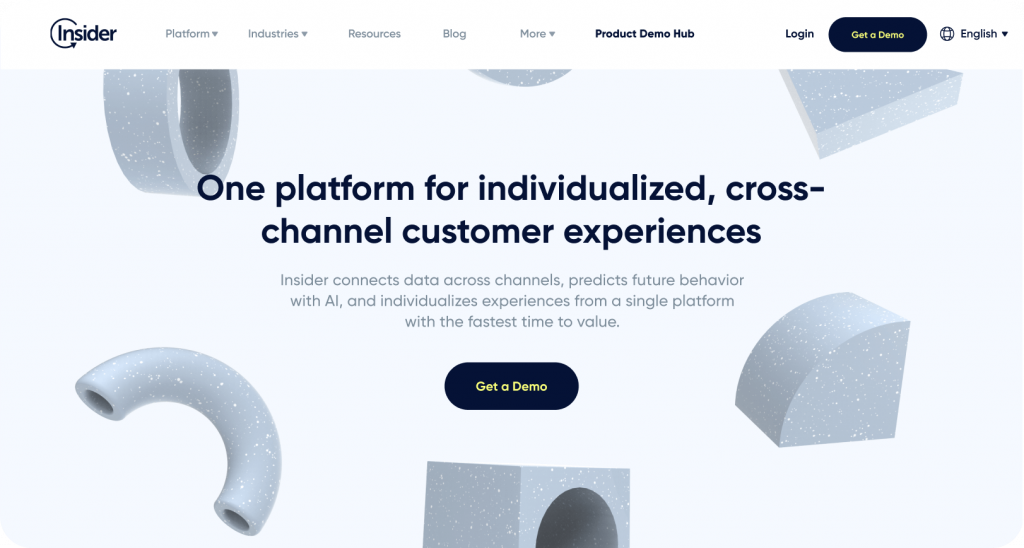
Personalization channels: Web (on-site), mobile apps, web push notifications, email, Facebook Messenger, WhatsApp, SMS, RCS, and ads.
Insider is our platform that brings together the most extensive set of personalization capabilities for established channels like on-site and email, as well as emerging ones like WhatsApp, Facebook Messenger, and SMS.
Insider comes with various personalization tools, such as:
- Actionable Customer Data Platform (CDP), which combines data from multiple sources — like your eCommerce website, customer service tool, CRM, POS, contact center, etc. — to create accurate profiles of your visitors and customers. Insider also drastically simplifies the process of using this data to customize all touchpoints people have with your brand, as we’ll discuss in a bit.
- AI-powered Smart Recommendations, which provide personalized product recommendations to the right audiences at the right times. Note: Avon used our Smart Recommendations to improve average order value (AOV) by nearly 11% and click-through rates (CTR) by 13%.
- A/B testing, which lets you run experiments across different channels to see which offers produce higher customer engagement and more conversions.
- Personalized site search, Instagram-like stories for mobile product discovery, and much more.
Put simply; Insider lets you unify fragmented data, activate it across your channels, and manage all your personalization efforts from one place (as opposed to keeping track of multiple logins and constantly jumping between different tools).
That’s why we’ve been recognized as a leading personalization engine in Gartner’s 20232 Magic Quadrant and as the top eCommerce personalization software in G2’s Grid.
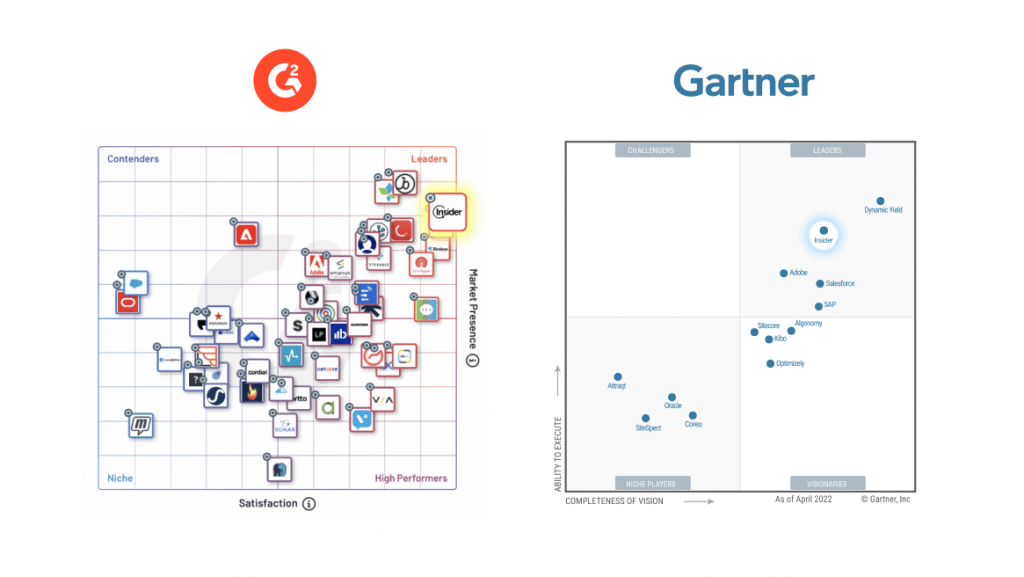
In the sections below, we’ll show you can use Insider to improve conversion rates, acquisition costs, lifetime value, and other key metrics by:
- Creating personalized experiences for all website visitors.
- Building detailed segments based on behaviors, interests, and other attributes.
- Providing personalized messaging, content, and product recommendations on your site, as well as across channels like SMS, email, WhatsApp, and social media.
Start Collecting Valuable Data and Personalizing From the Moment Visitors Land on Your Site
With Insider, the website personalization process starts as soon as visitors first come to your site. This means you can convert new visitors into buyers much faster without needing contact information or personal data.
Here’s how this works:
When a new visitor lands on your eCommerce store, Insider creates a profile for them in your Unified Customer Database. As they browse your site, our platform automatically populates their profile with information like:
- The categories they browsed.
- The product pages they visited.
- The price range they’re looking at.
- The attributes (colors, sizes, etc.) they’re interested in, and more.
For example, the screenshot below shows the profile of an anonymous visitor.
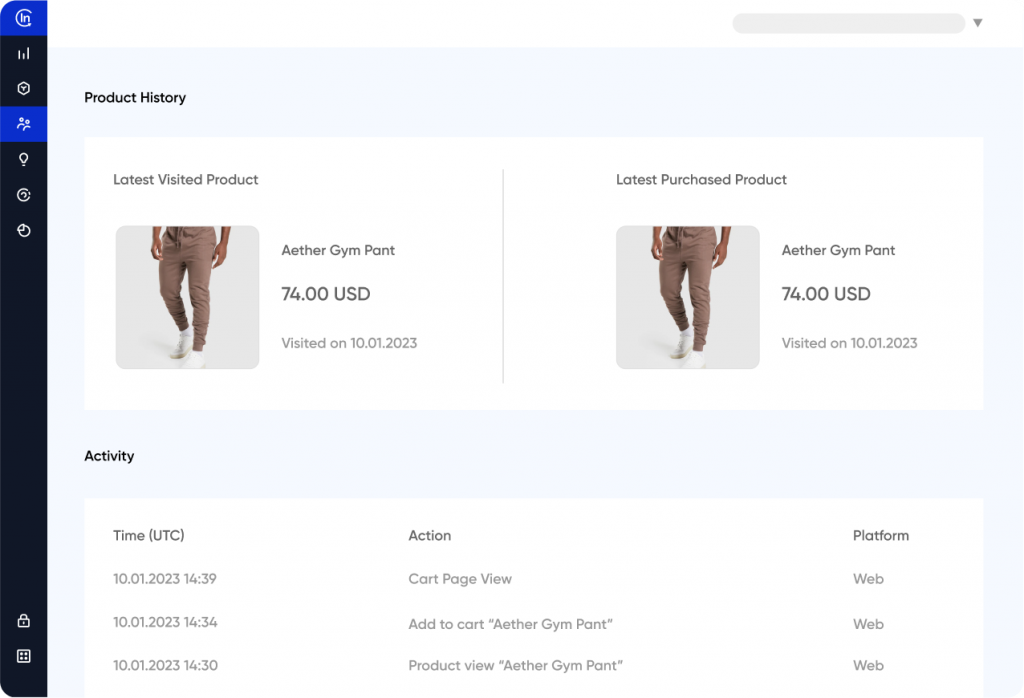
As you can see, Insider has collected tons of valuable data about the pages this user visited, their actions, and the product they visited last.
These insights allow you to personalize their experience in real-time, which can help build solid e-commerce conversion rates and reduce the time it takes to turn first-time visitors into customers.
In fact, Philips used Insider’s personalization capabilities to optimize the engagement and conversion rates of new website visitors. To do this, their team (with the help of our Account Management experts) integrated a coupon code overlay for both web and mobile users.
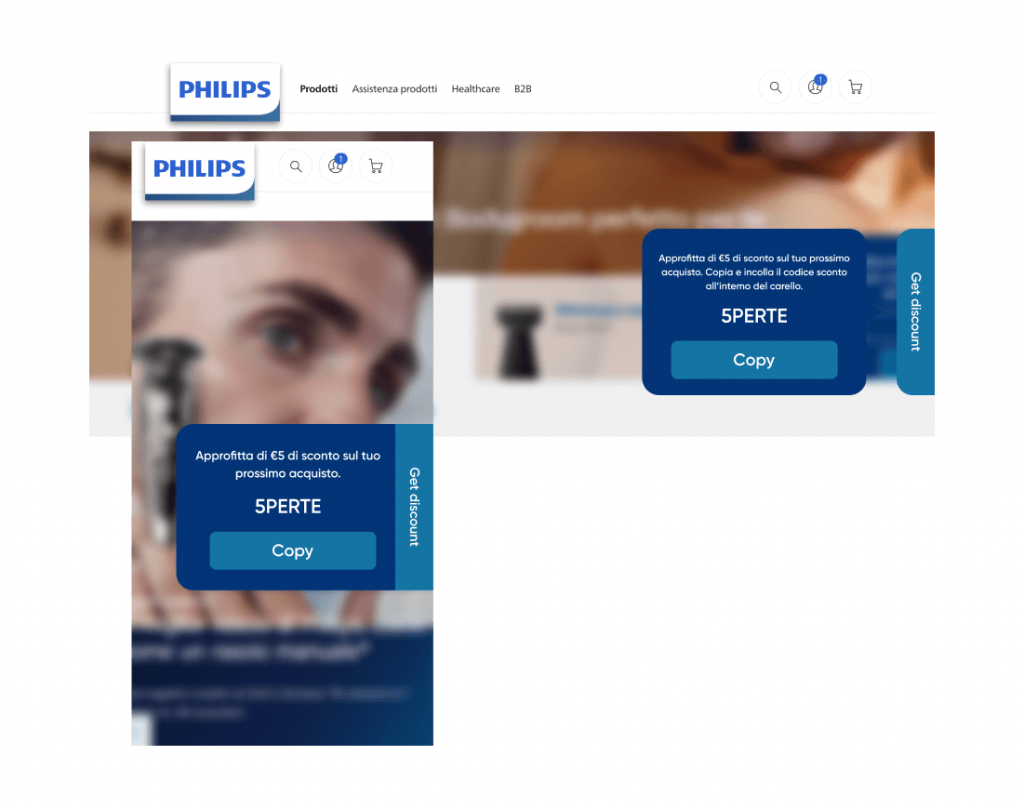
As a result, Philip’s conversion rate on desktop devices increased by nearly 15%, while their AOV on the mobile web saw an uplift of 10.15%.
Bring Visitors Back to Your Site Without (Without Retargeting)
Many new visitors won’t convert immediately, even after a personalized shopping experience.
This usually forces eCommerce brands to retarget users with ads on social media or search engines. While effective, retargeting can increase CAC and lower profit margins.
That’s why Insider helps you bring visitors back to your site using personalized web push notifications.
The process is simple — you only need to send an exit-intent pop-up to visitors, so they can agree to receive notifications. This is a small commitment that doesn’t require any personal data like their email or phone number.
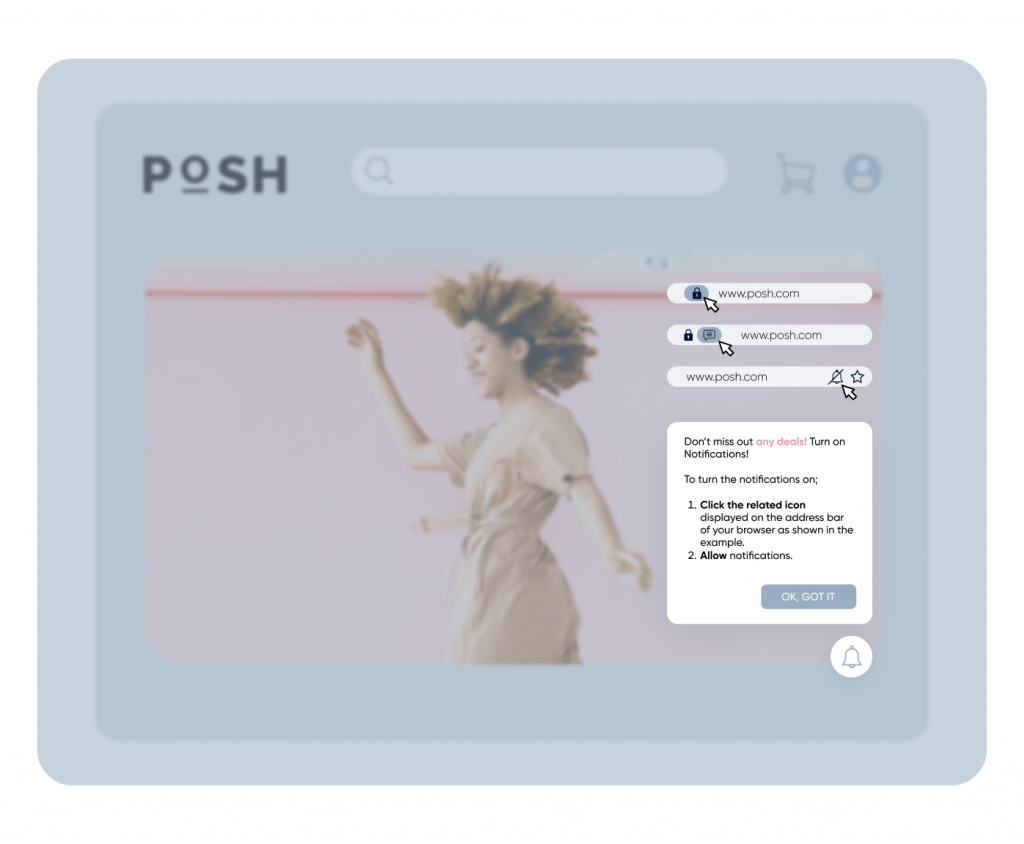
When you have their consent, you can bring them back to your site with web push notifications. And, since Insider has already collected behavior data, these notifications will be personalized based on the categories, products, price ranges, and other attributes.
This capability can drastically reduce your CAC (since you don’t have to retarget users with expensive performance ads) and help you recover abandoned carts.
For example, Lenovo used Insider’s web push notifications to target different user segments. This allowed them to reach visitors who abandoned their cart, send them personalized notifications, and get them back to the site. As a result, Lenovo’s cart abandonment rates fell by more than 10%.
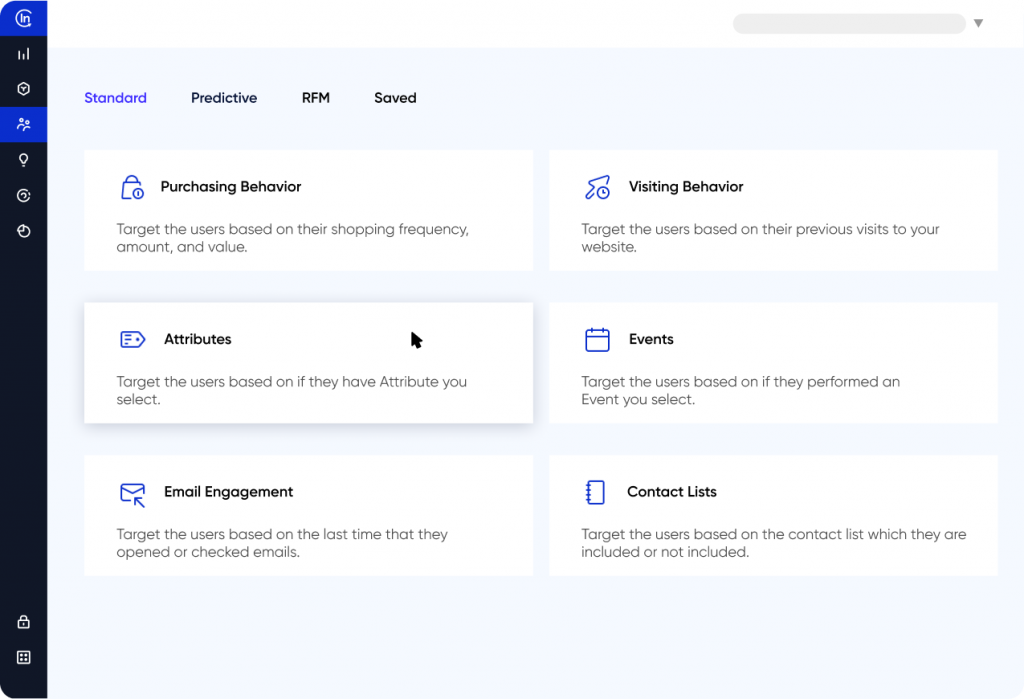
Our predictive audiences can also help you target visitors based on their affinity towards certain attributes, their likelihood to purchase, their discount affinity, and much more.
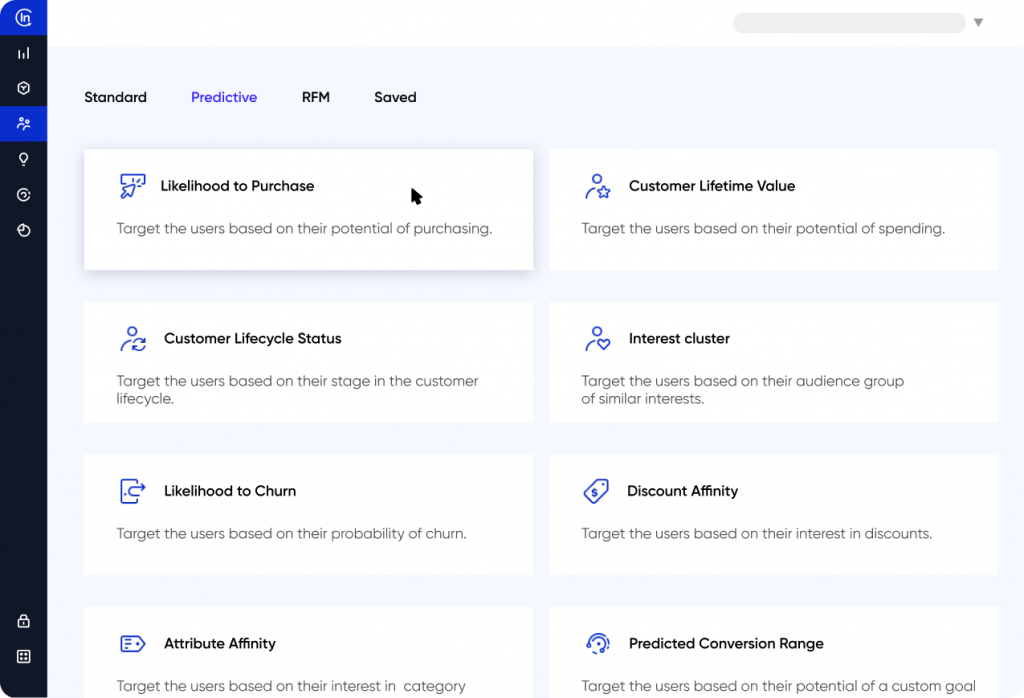
Here are some example segments you can create without needing any personal data:
- iOS visitors who added a specific product to their cart.
- UK visitors with a high discount affinity who abandoned their carts.
- Returning Android visitors from Latin America with a high likelihood of churning.
For instance, Adidas used our segmentation capabilities to show targeted promotional offers to different customer segments. Our team helped them create different variations of a side menu coupon and A/B test them to see which ones produce the most conversions.
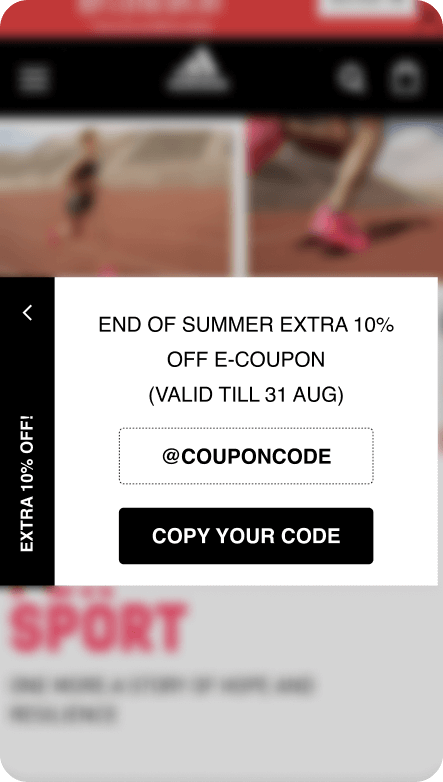
This combination of smart segmentation and A/B testing led to a whopping 258.99% increase in AOV for new users and a 35.31% boost in conversion rates for returning ones.
(If you already have personal data like emails, names, phone numbers, and birthdays, you can create even more precise segments and start scaling personalization across channels, as we’ll discuss in the next section)
After you’ve built your segments, you can take the next step of creating a personalized shopping experience for them — a process we call “activation”.
For example, you can activate an anonymous visitor segment by:
- Changing the banners they see based on their behavior and interests.
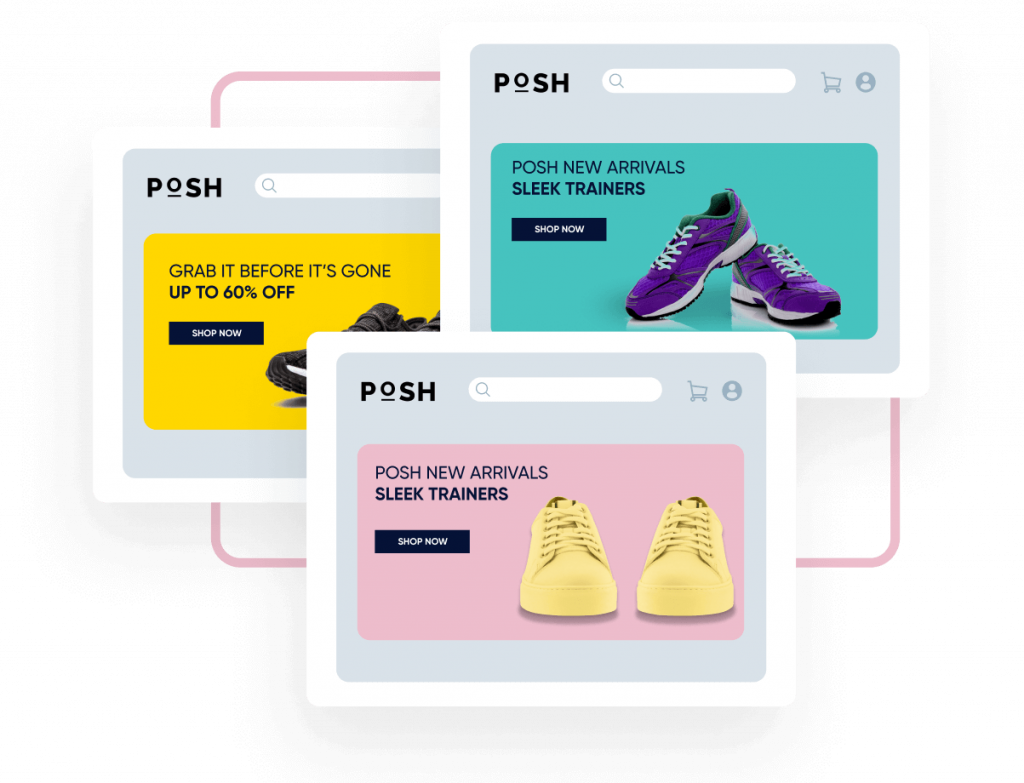
- Shuffling how categories are presented in your navigation with our Category Optimizer. Note: Samsung used this tactic to drive a 10% conversion rate uplift during the launch campaign for the Galaxy Note 9.
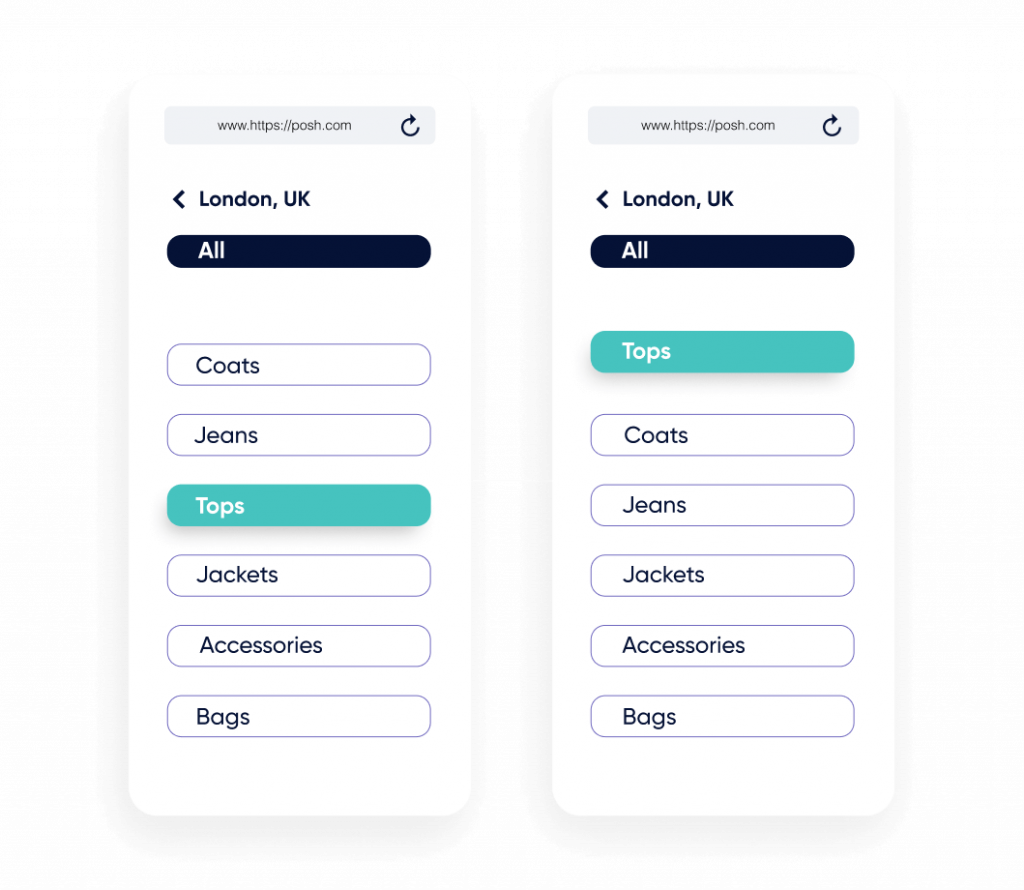
- Using real-time surveys to uncover customers’ needs.
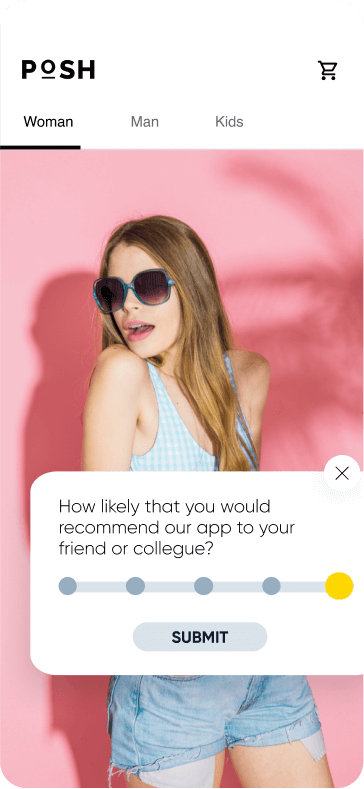
Users’ reactions, behaviors, and survey answers are all fed back into their profiles. This enriches your dataset and lets Insider find the next best steps, including upsell and cross-sell opportunities.
For example, say you have a visitor who showed an interest in black shoes and gray hoodies but didn’t buy anything even with relevant product suggestions. You can run a quick survey to understand why they didn’t convert — maybe they bought these items from another site or they thought the price was too high.
Either way, our platform takes that data into account when determining the next step. As a result, Insider can suggest products that complement black shoes and gray hoodies (if they bought from another site) or show lower-priced items to get this customer to convert.
Put simply, our platform learns and adapts messaging, content, and product recommendations in real-time.
Easily Scale Personalization Across Channels
When you have customers’ contact information (email, phone number, etc.), you can use Insider to make each of their touchpoints with your brand as personalized as your eCommerce site.
For example, say you have a customer segment that showed an affinity for a certain product category and price range.
You can use this information to send them personalized emails or WhatsApp messages two hours after they leave the site. If they still don’t purchase, you can retarget them with relevant social media ads a day later. Or, you can have Insider wait until there’s a price reduction for items in the category and only then engage this segment.
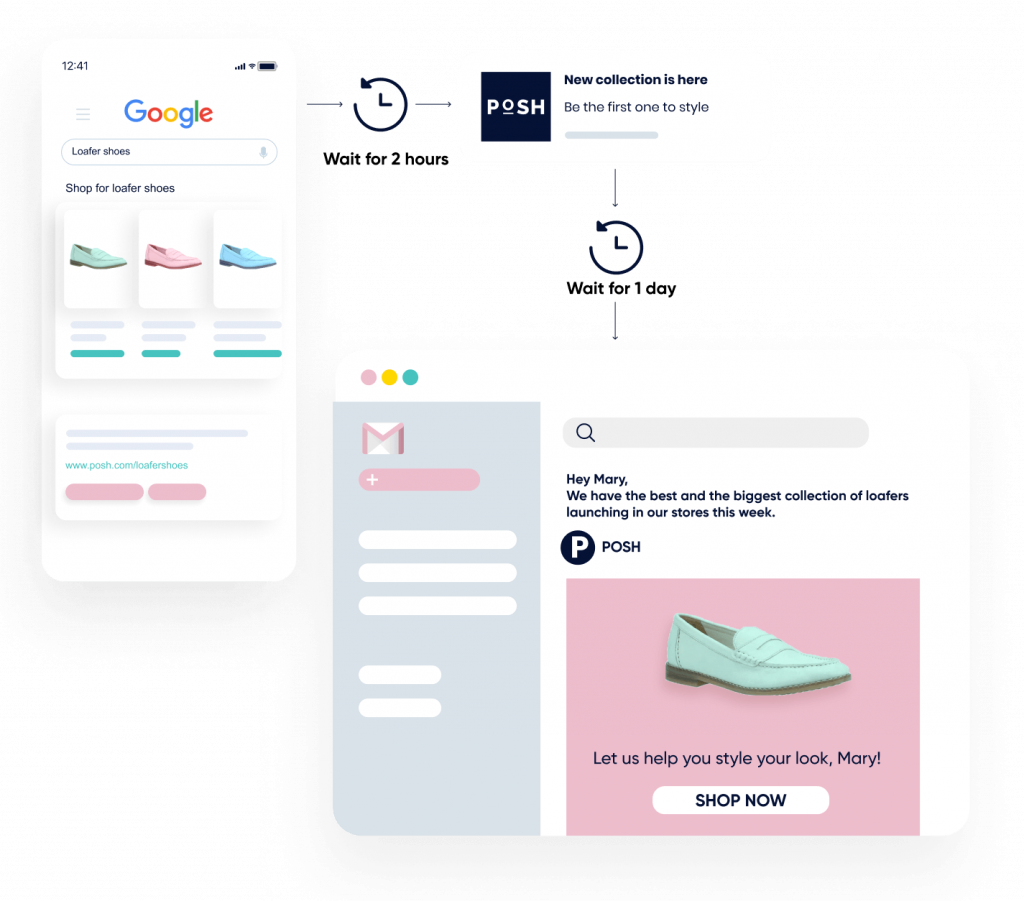
You can set the rules and fully automate the process with Insider’s Architect — a tool for creating individualized, cross-platform customer journeys via a simple drag-and-drop editor.
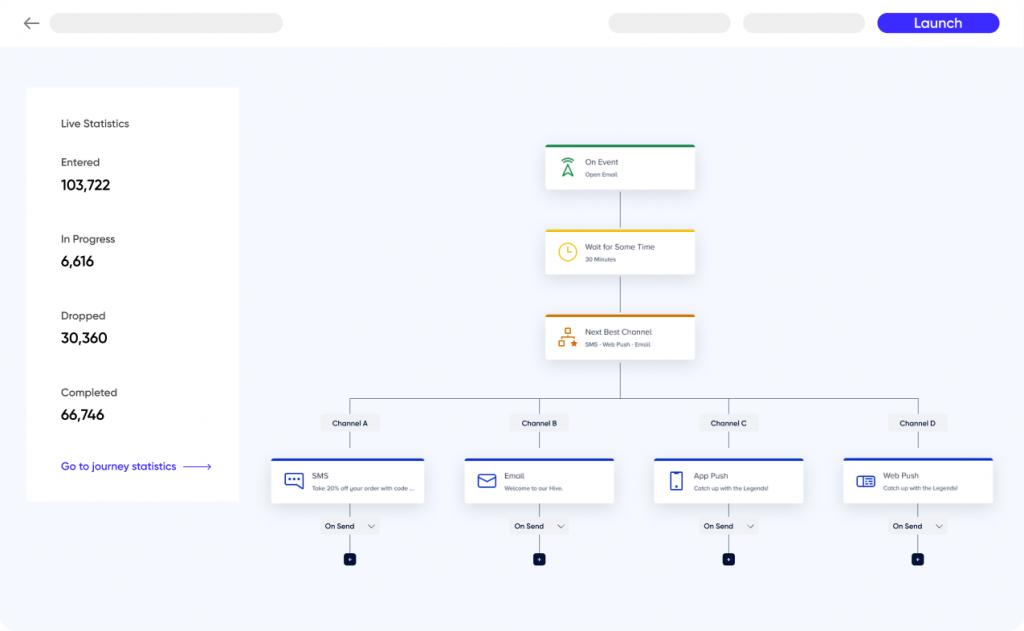
To make this a bit clearer, let’s look at an example of how one of our customers used Insider’s cross-channel capabilities:
Yves Rocher, a global cosmetics and beauty brand, wanted to personalize the experience for both their visitors and customers. To do so, they used Insider’s:
- AI-powered Smart Recommendations and push notifications to promote the right products to each customer, based on individual and segment-wide data. This led to a 20% increase in conversion rates.
- Intelligent predictive segmentation to only show their Facebook and Google ads to customers who were most likely to purchase. Thai resulted in a 39% uplift in return on ad spend (ROAS) on Google and over a 38% uplift in conversions on Facebook.
- Wheel of Fortune (one of our pre-built templates) to gamify the user experience and keep visitors on the site longer. This helped Yves Rocher expand their lead database by 6%.
- Banner Management Campaigns to show different on-site banners to different customer segments. For example, frequent shoppers were shown a selection of products that matched their taste, while customers who bought distinguished items were directed to an exclusive selection of products. This tactic led to an 18.36% conversion rate boost.
The whole process was orchestrated with Insider’s Architect. For more details, check out the full Yves Rocher case study.
Insider Bonus: Setup Assistance, High-Quality Support, and Templates
We know that one of the biggest challenges with eCommerce personalization is getting started. Personalization platforms are often complex to set up and use, so companies usually don’t see a meaningful return on their investment for months.
That’s exactly why we:
- Help you set up Insider and take full advantage of our platform (without charging extra for the setup).
- Have our team analyze your site and analytics before our first kick-off meeting. That way, we can give you ideas for building the right personalization strategy immediately after the setup is done.
- Maintain a vast selection of templates for each of our supported channels and personalization tools. These templates help you build personalized cross-channel customer journeys quickly, instead of having to start from scratch.
As a result, our customers consistently rate us as a top performer in categories like ease of use, ease of setup, and quality of support.
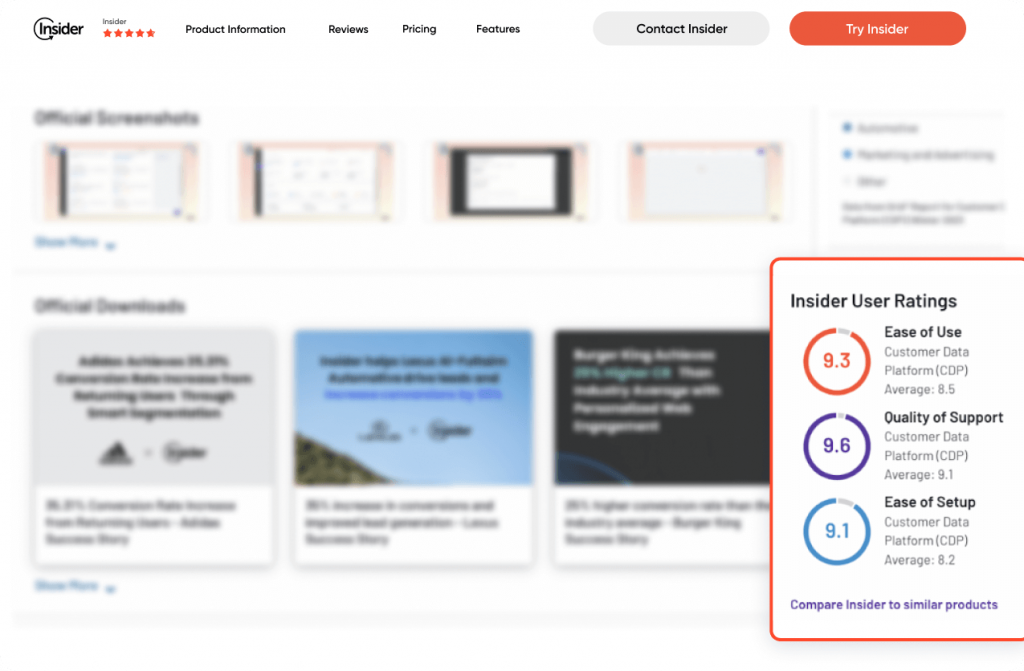
To learn how Insider’s cross-channel personalization functionalities can help you convert more visitors, reduce CAC, and improve retention, book a live demo with our team.
#2 DynamicYield eCommerce Personalization Software
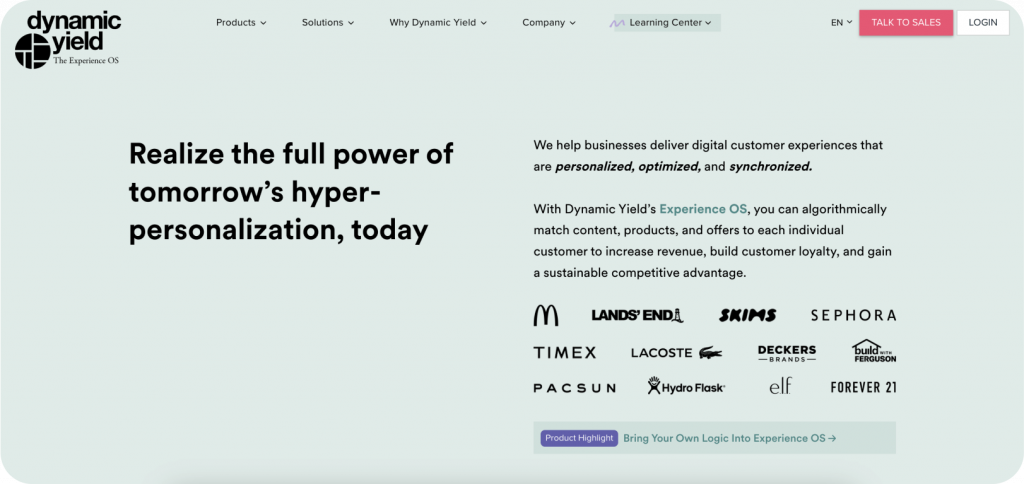
Personalization channels: Web (on-site), push notifications, email, mobile apps, and ads.
DynamicYield is a personalization platform used by online retailers, financial services companies, and businesses in various other industries. Their key personalization features are bundled into their Experience OS — a place where teams can collect and activate customer data.
DynamicYield also offers key personalization features such as segmentation, product recommendations, and A/B testing. However, DynamicYield doesn’t support personalization on messaging channels such as SMS, Facebook Messenger, or WhatsApp.
#3 Bloomreach eCommerce Personalization Software
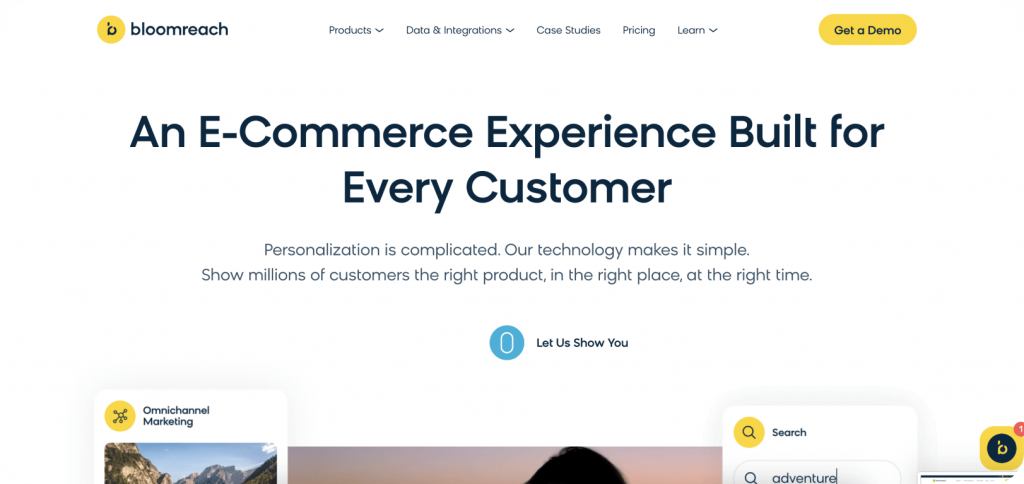
Personalization channels: Web (on-site), mobile app, push notifications, email, SMS, MMS, and ads.
Bloomreach is a commerce experience cloud that combines personalization and marketing automation tools. The foundation for these tools is Blooreach’s Customer Data Engine, which ingests data from different sources and helps you activate it across channels (similar to Insider’s Actionable CDP). It’s also worth noting that Bloomreach has a broader focus than just personalization since it offers a headless CMS, landing page builder, and SEO features.
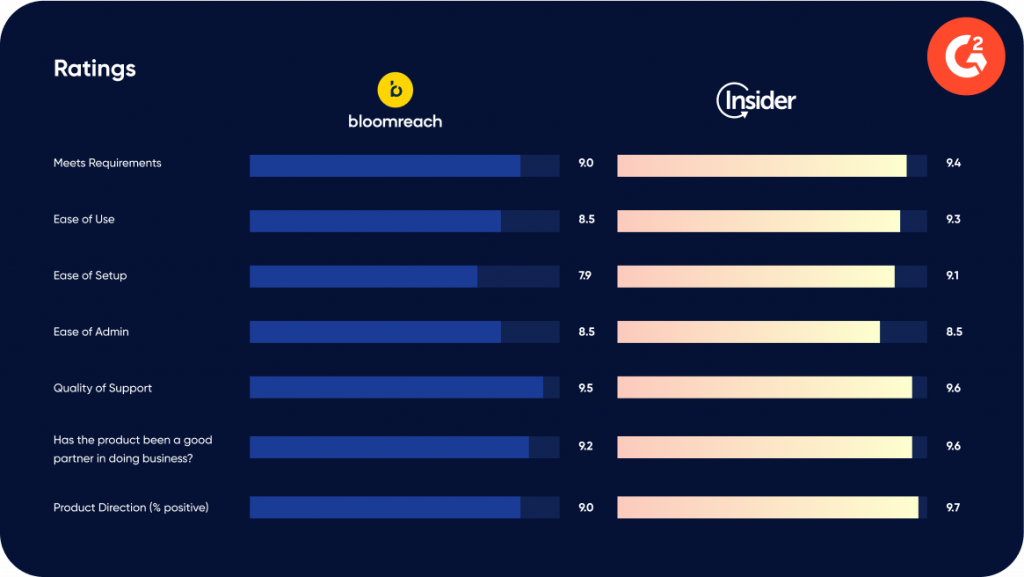
Note: Click here to see how Bloomreach compares to Insider.
Learn more: 11 Top Bloomreach competitors and alternatives
#4 Adobe Experience Cloud eCommerce Personalization Software
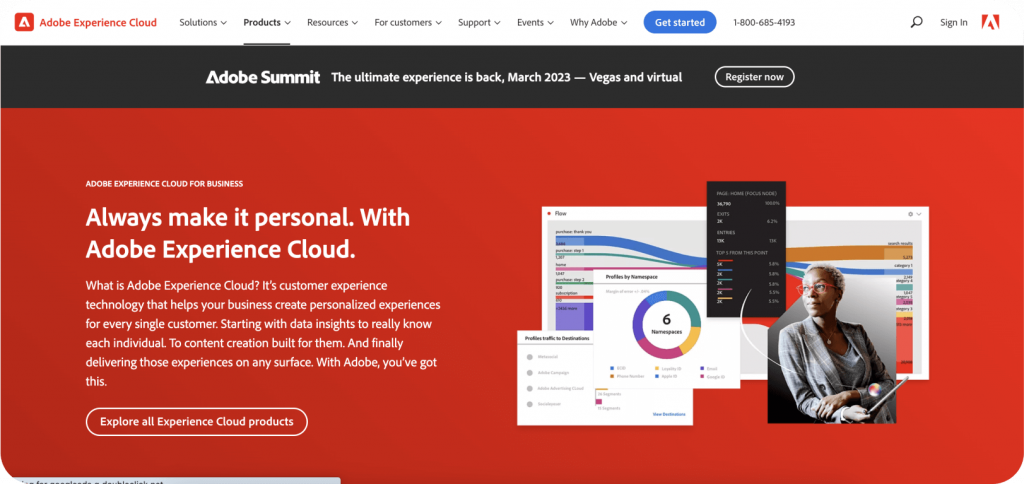
Personalization channels: Web (on-site), mobile app, email, SMS, and ads.
Adobe Experience Cloud combines a suite of products that help businesses personalize each customer’s experience. Some of the most popular products in this cloud include:
- Adobe’s Real-Time CDP, which unifies customer data from multiple sources and builds accurate, 360-degree customer profiles.
- Journey Optimizer, which lets you create personalized journeys for customers in real-time.
- Marketo Engage, which helps build segments and automate marketing campaigns.
#5 Salesforce Marketing & Commerce Clouds
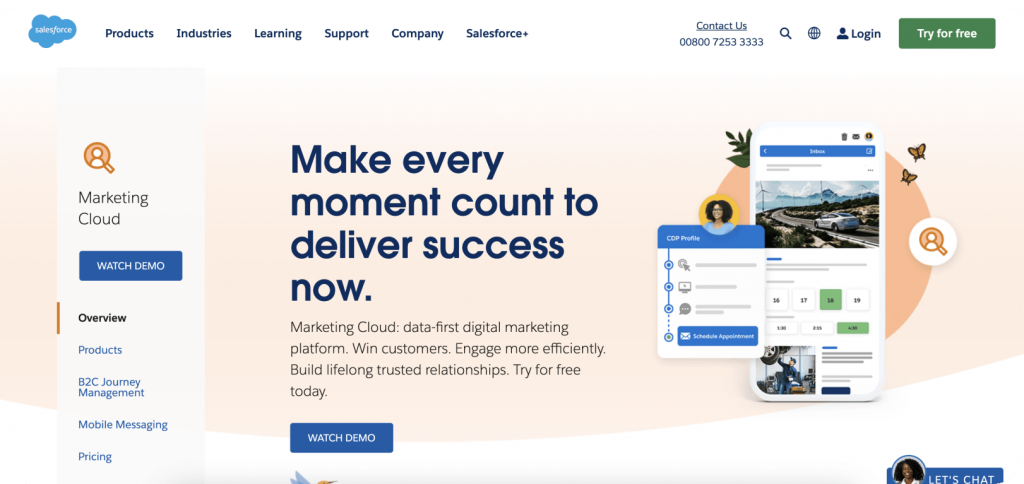
Personalization channels: Web (on-site), mobile app, push notifications, email, SMS, and ads.
Salesforce offers two distinct personalization solutions — Salesforce Marketing Cloud and Salesforce Commerce Cloud.
Marketing Cloud is a more traditional personalization and automation solution. It connects customer data from multiple sources and helps you create a consistent experience across channels with the help of machine learning algorithms. It also has a Journey Builder, which lets you build and visualize cross-channel customer journeys (similar to Insider’s Architect).
Commerce Cloud is a specialized eCommerce platform that helps B2B and B2C businesses create personalized buying experiences. Companies use it to give customers the opportunity to stay within a single channel that incorporates all of their data, rather than constantly moving across different ones.
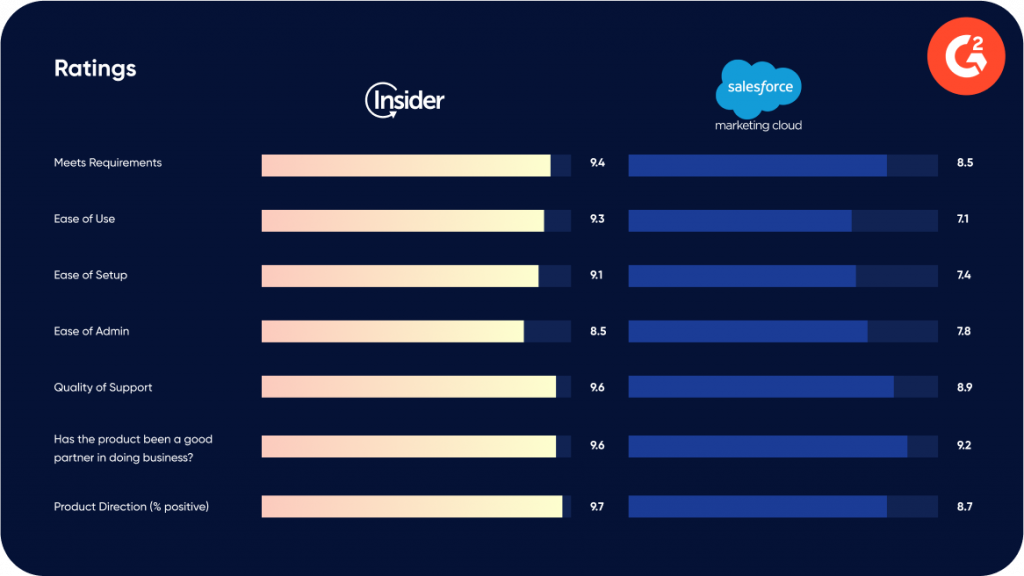
Note: Click here to see how Salesforce Marketing Cloud compares to Insider.
Learn more: 5 Best Salesforce Marketing Cloud competitors & alternatives
#6 Oracle Marketing eCommerce Personalization Software
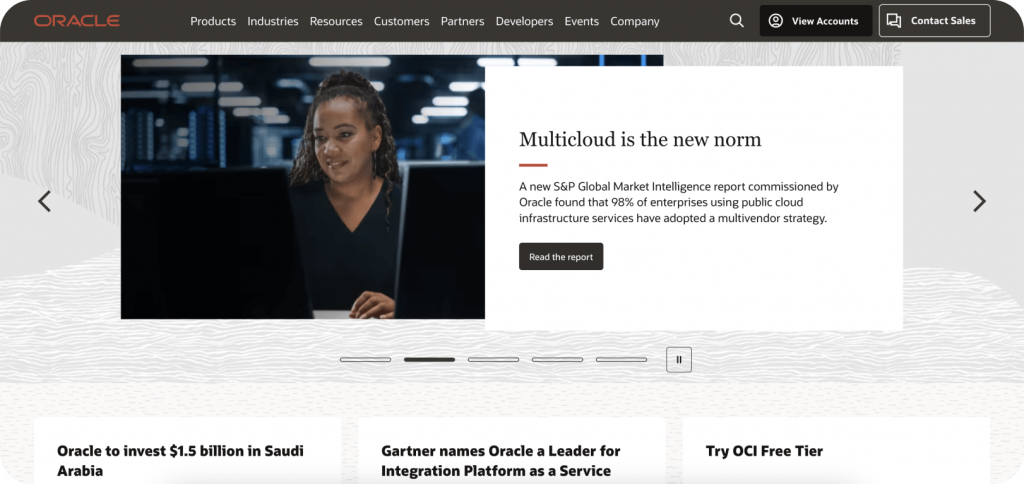
Personalization channels: Web (on-site), mobile app, email, SMS, push notifications, ads. Like the previous two entries, Oracle Marketing is a more traditional marketing cloud that bundles different products. This cloud is made up of products acquired by Oracle over the years, like Maxymiser (an A/B testing and personalization solution), CloudTwist (a customer loyalty platform), Eloqua (an omnichannel marketing automation platform), and more. Additionally, there are now two versions of Oracle Marketing — one for B2B and one for B2C companies — each of which includes a different mix of products.
#7 Nosto eCommerce Personalization Software
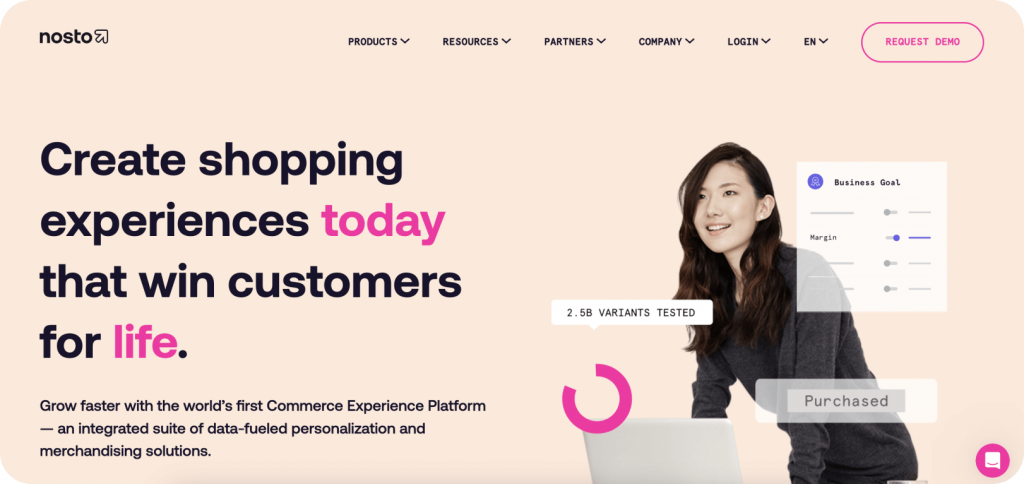
Personalization channels: Web (on-site), mobile app, email, and in-store.
Nosto is a commerce experience platform that combines:
- On-site personalization.
- Personalized email marketing.
- Category Merchandising, which changes product order and selection based on user behavior.
- Content Personalization, which adjusts messaging and visuals to each shopper’s interests.
- Dynamic Bundles, which help with cross-sells and upsells, and more.
Nosto also integrates with popular eCommerce platforms like Shopify, BigCommerce, and Magento. And while it doesn’t support as many channels or advanced personalization features as the previous entries, Nosto can still be a good fit for small and mid-sized online stores.
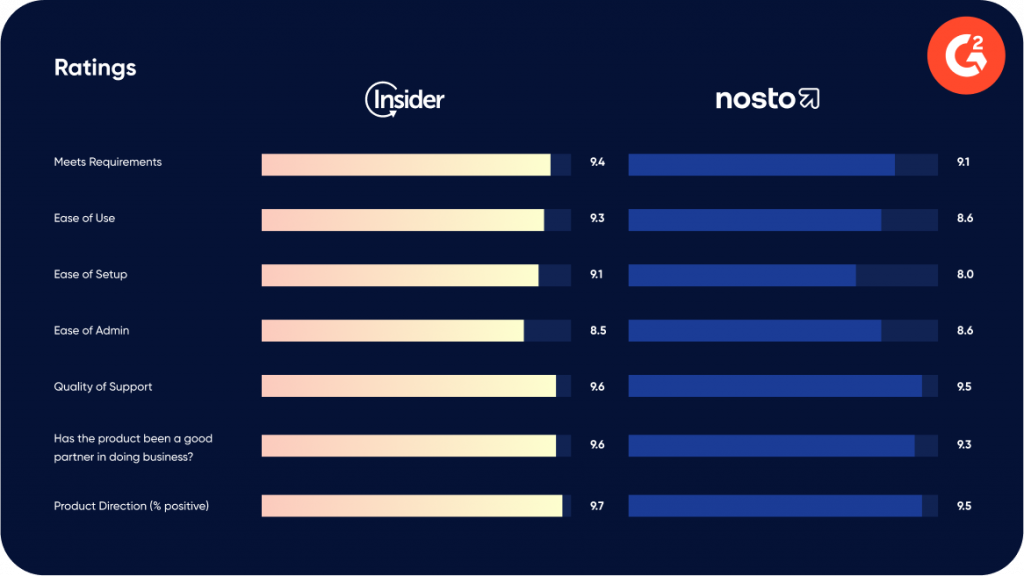
Note: Click here to see how Nosto compares to Insider.
eCommerce Personalization for Each Customer Touchpoint with Insider
Insider can help you improve conversion rates, generate more revenue, and reduce CAC by:
- Connecting customer data from different channels and systems to reveal interests and preferred touchpoints.
- Predicting customer behavior with our AI-powered intent engine, such as which segments are likely to convert, buy, and churn.
- Deliver individualized online shopping experiences to customers across all touchpoints with your brand.
Our channel integrations are also easy to set up, reducing the dependency on technical teams. Plus, our support team and extensive template library will ensure you get up and running as fast as possible.
Click here to book a demo with our team and learn how Insider can help you reach your business goals.
We hope this guide has helped you understand how to get started with cross-channel marketing. And if you’d like to learn more about how Insider can help you deliver outstanding cross-channel marketing campaigns, book a demo with us today.

